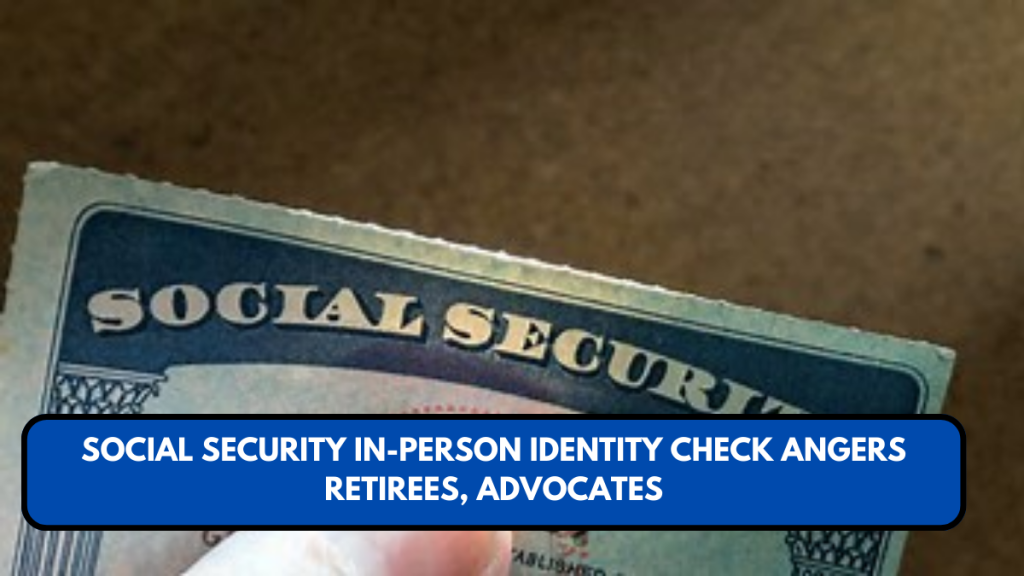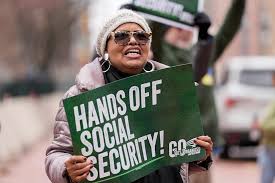
The Social Security Administration (SSA) has come under fire from retirees and advocacy groups following its recent policy update requiring in-person identity verification for certain services. The rule, set to take effect on March 31, 2025, mandates that individuals unable to verify their identity online must visit a local SSA field office for confirmation — a move critics argue will burden some of the most vulnerable Americans.
Why the Change?
According to the SSA, the change is part of an effort to enhance security and curb rising cases of fraud involving Social Security benefits — particularly direct deposit fraud, which the agency says results in losses exceeding $100 million annually.
The new rule applies to:
- New applicants who cannot verify their identity through the online my Social Security portal
- Existing beneficiaries making direct deposit changes
By requiring in-person verification, the SSA hopes to prevent fraudulent access to benefits and ensure funds are securely routed to legitimate recipients. The agency has also stated that the in-person requirement will allow it to expedite direct deposit changes — reducing processing time from five days to just one.
“We are committed to making sure benefits go to the right person. These changes will strengthen our fraud prevention efforts and improve service delivery,” the SSA said in its official blog post.
Backlash From Advocates and Retirees

Despite the SSA’s rationale, the policy has sparked backlash from senior citizens, disability rights advocates, and lawmakers. Critics argue the requirement poses serious accessibility issues for older Americans, people with disabilities, and residents of rural areas who may lack transportation or reliable internet access.
A key concern is the ongoing closure of several SSA field offices and an anticipated workforce reduction at the agency. With fewer in-person service locations available, many beneficiaries could face long wait times, travel burdens, and possible interruptions in receiving their benefits.
“This policy creates a digital or physical hurdle for people already facing systemic challenges,” said a representative from the National Committee to Preserve Social Security and Medicare. “It’s tone-deaf to the realities of aging and disability in this country.”
Lawmakers Push Back
In response, 62 House Democrats have formally urged the SSA to reconsider the policy. In a letter to SSA Commissioner Martin O’Malley, they expressed concern that the requirement would result in undue hardship for constituents who cannot easily access SSA field offices or navigate online systems.
“We recognize the need to protect Social Security from fraud, but we must also ensure that efforts to modernize don’t come at the expense of accessibility,” the letter reads.
Lawmakers are urging the SSA to develop alternative identity-proofing methods, such as phone or virtual verification options, especially for individuals in underserved communities.
Potential Consequences
The controversy arises at a time when millions of Americans rely on Social Security for their basic needs. According to the SSA’s data, over 71 million people receive monthly benefits, including retirees, disabled workers, and survivors.
If the new requirement creates barriers to access, critics warn it could lead to:
- Delays in benefit disbursement
- Increased financial insecurity for fixed-income households
- Higher no-show or reschedule rates at SSA offices already under strain
SSA’s Response and Next Steps

The SSA has acknowledged the concerns and stated it will closely monitor the implementation of the policy and adjust procedures if necessary.
“We are focused on both security and service. We want to protect our programs from fraud without making it harder for people to get the help they need,” an SSA spokesperson said.
The agency encourages individuals to create and manage their benefits through the my Social Security account online to avoid in-person visits whenever possible. For those who must visit a field office, the SSA has a locator tool to find the nearest service center.
What You Can Do?
If you’re a Social Security recipient or plan to apply for benefits soon, here’s what you should know:
- Check if your identity can be verified online through your my Social Security account.
- If required to go in person, schedule your appointment early using the local office locator.
- For additional questions or assistance, visit the SSA’s Help Center or call their toll-free number at 1-800-772-1213.
Conclusion
While the SSA’s new policy aims to curb fraud and improve efficiency, its rollout has sparked a national conversation about the balance between security and accessibility. As March 31 approaches, beneficiaries, especially seniors and those with limited mobility, are encouraged to prepare for possible service changes and stay informed.
For continued updates, visit SSA.gov.



